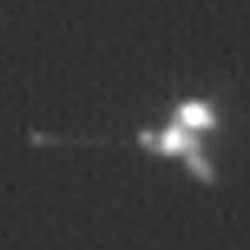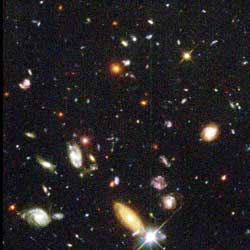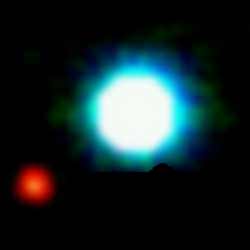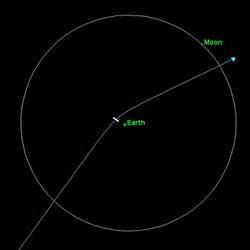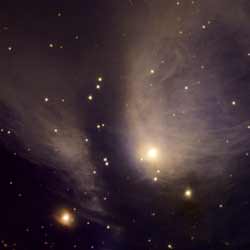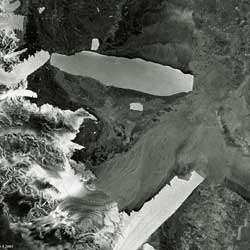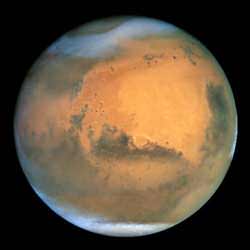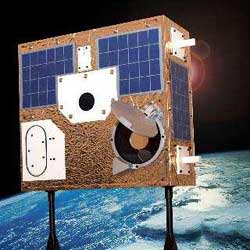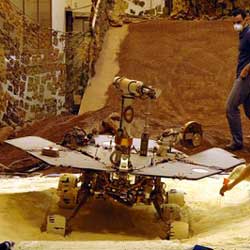
Lunar Map courtesy of The Sky Plus. Click to enlarge.
Monday, May 16 – With the Moon now approaching first quarter, this would be an excellent time to look for it in late afternoon skies. If you’re not busy this evening, why don’t we take the opportunity to explore the lunar surface and look at four very cool features.
Central on the terminator tonight will be Sinus Medii – the adopted “center” of the lunar disc and the point from which latitude and longitude are measured. This smooth plain may look small, but covers about as much area as the states of Massachusetts and Connecticut combined. On a curious note, in 1930 Sinus Medii was chosen by Edison Petitt and Seth Nicholson for surface temperature measurements during full Moon. Experiments of this type were began by Lord Rosse as early as 1868, and they found the surface to be just slightly warmer than boiling water. Around a hundred years after such experiments began, Surveyor 6 successfully landed in Sinus Medii on November 9, 1967 confirming Surveyor 5’s findings – and became the very first probe to “lift off” from the lunar surface.
To the south/southeast of the Sinus Medii is the unmistakable Albategnius. It is an old formation, with its walls broken by many more recent craters, like Klein on its southwestern edge. Albategnius is historic as well, because in 1962, it became the target of the laser beam projected onto the lunar surface. To the north, look for the long dark scar of the Alpine Valley as it angles across the lunar Alps and the Sun beginning to rise on the single, unusual peak of pyramid-like Mons Piton.
Tuesday, May 17 – Today in 1835, J. Norman Lockyer was born. While that name might not stand out, Lockyer was the first to note previously unknown absorption lines while making visual spectroscopic studies of the Sun in 1868. Little did he know at the time, he had correctly identified the most simple and second most abundant element in our universe – helium – an element not discovered on Earth until 1891! Also known as the “Father of Archeoastronomy”, Sir Lockyer was one of the first to make the connection with ancient astronomical structures such as Stonehenge and the Egyptian pyramids. (As a curious note, 14 years after Lockyer’s notation of helium, a sun-grazing comet made its appearance in photographs of the solar corona taken during a total eclipse in 1882… It hasn’t been seen since.)
If you would like to see a helium rich star, look no further tonight than Alpha Viginis – Spica. As the sixteen brightest star in the sky, this brilliant blue/white “youngster” appears to be about 275 light years away and is about 2300 times brighter than our own Sun. Although we can not see it visually, Spica is a double star. Its spectroscopic companion is roughly half its size and is also helium rich.
Feeling like some peaceful contemplation? Then visit the lunar surface tonight and spend some time with crater Plato. This huge ellipse to the lunar north has an unusual dark stained lava floor that has been the site of many unconfirmed changes. Visit along its east wall where the shadow play among its many crests will appear almost like a distant city skyline.
Wednesday, May 18 – On this day in 1910, Comet Halley transited the Sun, but could not be detected visually. Since the beginning of astronomical observation, transits, eclipses and occultations have provided science with some very accurate determinations of size. Since Comet Halley could not be spotted against the solar surface, we knew almost a century ago that the nucleus had to be smaller than 100 km.
So, would you like to get a grasp on that concept? Then have a look at the lunar surface tonight and the most prominent crater of all – Copernicus. In a study done by Shoemaker, this ancient crater is no doubt formed by a gigantic impact. Feature after feature so closely resembles geological impact craters seen here on Earth, that we can say with complete certainty that this crater was formed by a large meteoritic body. And just how large is crater Copernicus? Oh, about the size of a certain famous comet’s nucleus – 100 km…
Thursday, May 19 – Tonight on this universal date, the Moon will occult Jupiter for viewers in a small portion of south Africa and the northern tier of South America. Please visit this IOTA webpage for specific times in your location. For viewers in North America, the Moon and Jupiter will make a very picturesque sight as they pass very closely to each other.
While watching this pair tonight, take the time to look at the lunar surface and enjoy the “Bay of Rainbows” – Sinus Iridium. If you’re watching Jupiter, a great many viewers will get to enjoy the both the transits of Io and Europa as well as their shadows and the “Great Red Spot” will happily join the show at 22:10 UT.
Friday, May 20 – Tonight let’s skip the Moon and head for the stars as we set our sights towards the fourth brightest star in the sky – Arcturus.
Located around 37 light years from us, the orange giant is heading our way at about 5 kilometers per second and will pass us in a couple of thousand years. With a diameter of roughly 33 million kilometers, this population II star was one of the very first to be observed during the daylight in 1635 and is often referred to as the “Watcher of the Bear”. Oddly enough, it reached fame in 1933 when its light was focused telescopically on a photoelectric cell and the power it generated used to turn on a switch. That switch was connected to the floodlights at the Chicago Exposition “Century of Progress” – with Arcturus chosen for the honors because the light that reached the Earth that night had left the star during the Chicago 1893 Exposition. Here’s to guessing you couldn’t see Arcturus once the lights were on….
But keep your lights off and your eyes trained on the finderscope as we explore four “neighbors” of Arcturus. About a fist width east, you will see four dim stars that will require optical aid with tonight’s “lunacy”. To the north is Xi – a very pretty double star with a yellowish primary and a more orange secondary. The next star to the south is Omicron and then Pi. You will find Pi to be a 5th magnitude double with a 6th magnitude companion relatively close to the east/southeast. For larger scopes, keep heading south for double Zeta, which are matched magnitudes and close enough to need high power and steady skies to split.
Saturday, May 21 – In 1961, United States President John F. Kennedy launches the country on a journey to the Moon as he makes one of his most famous speeches to Congress: “I believe this nation should commit itself to achieving the goal, before this decade is out, of landing a man on the Moon and returning him safely to Earth. No single space project in this period will be more impressive to mankind, or more important for the long-range exploration of space…”
Tonight let’s explore the lunar surface with binoculars as we view the areas of all the historic Apollo missions. Starting with Apollo 11, you will find its landing site on the southwest corner of Mare Tranquillitatus where it meets with Mare Nectaris. Apollo 12 is near the terminator to the west and just north of the small, bright punctuation of Euclid. Apollo 14’s remains lay due east on the border of Mare Cognitum. Look to the north for shallow Archimedes and the Apennine Mountain range where you will find Apollo 15 forever waiting in Palus Putredinus. Look southeast of Apollo 11’s site in the rugged terrain west of Theophilus for Apollo 16, and Apollo 17 ends the lunar tour on the southeastern shore of Mare Serenitatis where it joins Mare Nectaris.
Since you’re out with binoculars, tonight would be a great opportunity to spot an asteroid as well! At close to 7th magnitude, you’ll find Ceres just about a degree south of Delta Librae. Check the minor planets listing at Heaven’s Above for a locator chart.
Sunday, May 22 – Tonight the Moon will be at minimum libration tipping crater Otto Struve our way. You will find this strange, tomato-shaped crater on the extreme limb just west of bright Aristarchus.
Since Struve was the master of double stars, let’s make it easy to find one of his discoveries! Start with reasonably accurate equatorial alignment and take the time to enjoy fantastic double Cor Caroli again. Turn off any drive units, or just wait… Wide, white double, Struve 1702 will “drift” into the eyepiece in 150 seconds.
Until next week? Ask for the Moon, but keep reaching for the stars! May all your journeys be at Light Speed… ~Tammy Plotner
